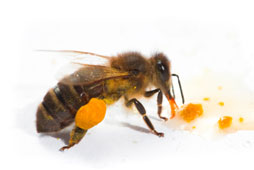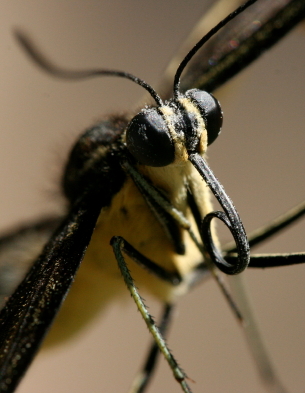[vc_row css=”.vc_custom_1463560421157{background-color: #fcc223 !important;}”][vc_column width=”1/6″][vcex_spacing][/vc_column][vc_column width=”2/6″][vcex_spacing][vc_single_image image=”6792″ alignment=”right”][/vc_column][vc_column width=”2/6″][vcex_spacing size=”50px”][vc_column_text]
How a Garden Works…
POLLINATION
[/vc_column_text][vc_column_text]
Just like making new people, plants need a male and female to make a new seed which will grow into a new plant. The difference with plants is that plants have both the male and the female parts in a single flower.
The male part of the flower makes “pollen.” Pollen looks like powder or dust. The female part of the flower (called the pistil) makes the egg. Pollination is the way “pollen” from the male part of a flower gets to the egg in the female part of a flower to form a seed.
[/vc_column_text][vcex_spacing][/vc_column][vc_column width=”1/6″][/vc_column][/vc_row][vc_row css=”.vc_custom_1463561974233{background-color: #78aadd !important;}”][vc_column width=”1/6″][vcex_spacing][/vc_column][vc_column width=”1/3″][vcex_spacing size=”100px”][vc_column_text]
A pollinator moves pollen from the male flower (or male part of a flower) to the female flower (or female part of a flower) in order to accomplish fertilization.
[/vc_column_text][vcex_spacing][/vc_column][vc_column width=”1/3″][vcex_spacing size=”50px”][vc_single_image image=”7694″ alignment=”center”][vcex_spacing][/vc_column][vc_column width=”1/6″][/vc_column][/vc_row][vc_row full_width=”stretch_row” css=”.vc_custom_1475534188590{background-color: #000000 !important;}”][vc_column width=”1/6″][vcex_spacing size=”50px”][/vc_column][vc_column width=”2/3″][vcex_spacing][vcex_spacing][vc_raw_html]JTNDaWZyYW1lJTIwc3JjJTNEJTIyaHR0cHMlM0ElMkYlMkZwbGF5ZXIudmltZW8uY29tJTJGdmlkZW8lMkY3NzgxMTEyNyUyMiUyMHdpZHRoJTNEJTIyNjQwJTIyJTIwaGVpZ2h0JTNEJTIyMzYwJTIyJTIwZnJhbWVib3JkZXIlM0QlMjIwJTIyJTIwd2Via2l0YWxsb3dmdWxsc2NyZWVuJTIwbW96YWxsb3dmdWxsc2NyZWVuJTIwYWxsb3dmdWxsc2NyZWVuJTNFJTNDJTJGaWZyYW1lJTNFJTBB[/vc_raw_html][vc_column_text]
From Nature Works Everywhere by The Nature Conservancy:
[/vc_column_text][vcex_spacing size=”50px”][/vc_column][vc_column width=”1/6″][vcex_spacing][/vc_column][/vc_row][vc_row css=”.vc_custom_1463557717449{background-color: #fcc223 !important;}”][vc_column width=”1/6″ css=”.vc_custom_1463555065393{margin-right: 30px !important;margin-left: 40px !important;}”][vcex_spacing size=”60px”][/vc_column][vc_column width=”2/3″ css=”.vc_custom_1463540056173{margin-right: 20px !important;margin-left: 20px !important;}”][vcex_spacing][vc_column_text]
POLLINATION VOCABULARY
NECTAR: a sweet liquid reward for pollinators that is produced by flower glands called nectaries.
PISTIL: the female part of the flower including the stigma, style and ovary.
POLLEN: the fine, powder-like material produced by the anthers of flowering plants.
STAMEN: the male part of the flower consisting of the anther and filament.
[/vc_column_text][vcex_spacing size=”50px”][/vc_column][vc_column width=”1/6″][/vc_column][/vc_row][vc_row][vc_column width=”1/6″][vcex_spacing][/vc_column][vc_column width=”2/3″][vcex_spacing][vc_column_text]  Pollinators love to drink the sugary-sweet nectar that is made by flowers at the base of the pistil. Pollinators move from flower to flower in search of more sweet nectar. When pollinators go in to suck up the nectar, they brush against the anthers and get pollen on their bodies. When they land on a flower, the pollen will rub off their body onto the pistil. If the pollen ends up near the opening at the top of the pistil, the pollen will make its way down the pistil to the egg. When the egg and the pollen meet, a seed is formed. A seed has everything it needs to form a new plant. [/vc_column_text][vcex_spacing][vc_column_text]
Pollinators love to drink the sugary-sweet nectar that is made by flowers at the base of the pistil. Pollinators move from flower to flower in search of more sweet nectar. When pollinators go in to suck up the nectar, they brush against the anthers and get pollen on their bodies. When they land on a flower, the pollen will rub off their body onto the pistil. If the pollen ends up near the opening at the top of the pistil, the pollen will make its way down the pistil to the egg. When the egg and the pollen meet, a seed is formed. A seed has everything it needs to form a new plant. [/vc_column_text][vcex_spacing][vc_column_text]
 You can see how honey bees are designed to carry pollen. Many bees have sacs on their hind legs in which to store the pollen and carry it as they fly back to their hive.
You can see how honey bees are designed to carry pollen. Many bees have sacs on their hind legs in which to store the pollen and carry it as they fly back to their hive.
VOCABULARY
POLLEN BASKET: a smooth, slightly concave surface of the outer hind leg of a bee that is fringed with long, curved hairs that hold the pollen.
PROBOSCIS: a long, thin tube that forms part of the mouth of butterflies and some other insects
[/vc_column_text][vcex_spacing][vc_column_text]  A butterfly drinks through its proboscis using it like a straw. Using their long proboscis, butterflies (and moths) can easily reach the nectar from the disc at the base of the stigma. As they insert their proboscis into the flowers to get to the nectar, the proboscis comes into contact with the anthers. Pollen attaches to the proboscis. As the butterfly finishes nectaring and moves on to the the next nectar flower, the proboscis coils back into its resting position. Most of the pollen falls off as the proboscis is coiled, leaving only a small percentage of pollen to be transferred to a receptive stigma on another prairie phlox flower. [/vc_column_text][/vc_column][vc_column width=”1/6″][/vc_column][/vc_row][vc_row css=”.vc_custom_1471984090969{background-color: #448acb !important;}”][vc_column][vc_single_image image=”5803″ alignment=”center”][/vc_column][/vc_row]
A butterfly drinks through its proboscis using it like a straw. Using their long proboscis, butterflies (and moths) can easily reach the nectar from the disc at the base of the stigma. As they insert their proboscis into the flowers to get to the nectar, the proboscis comes into contact with the anthers. Pollen attaches to the proboscis. As the butterfly finishes nectaring and moves on to the the next nectar flower, the proboscis coils back into its resting position. Most of the pollen falls off as the proboscis is coiled, leaving only a small percentage of pollen to be transferred to a receptive stigma on another prairie phlox flower. [/vc_column_text][/vc_column][vc_column width=”1/6″][/vc_column][/vc_row][vc_row css=”.vc_custom_1471984090969{background-color: #448acb !important;}”][vc_column][vc_single_image image=”5803″ alignment=”center”][/vc_column][/vc_row]

